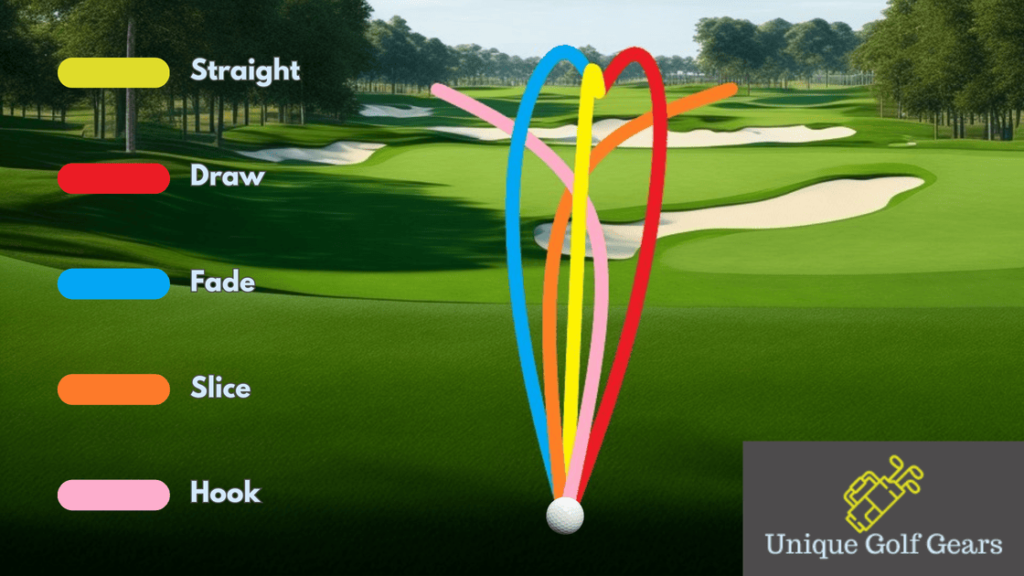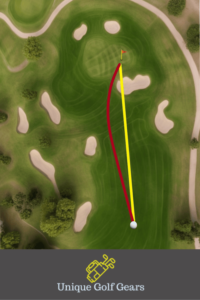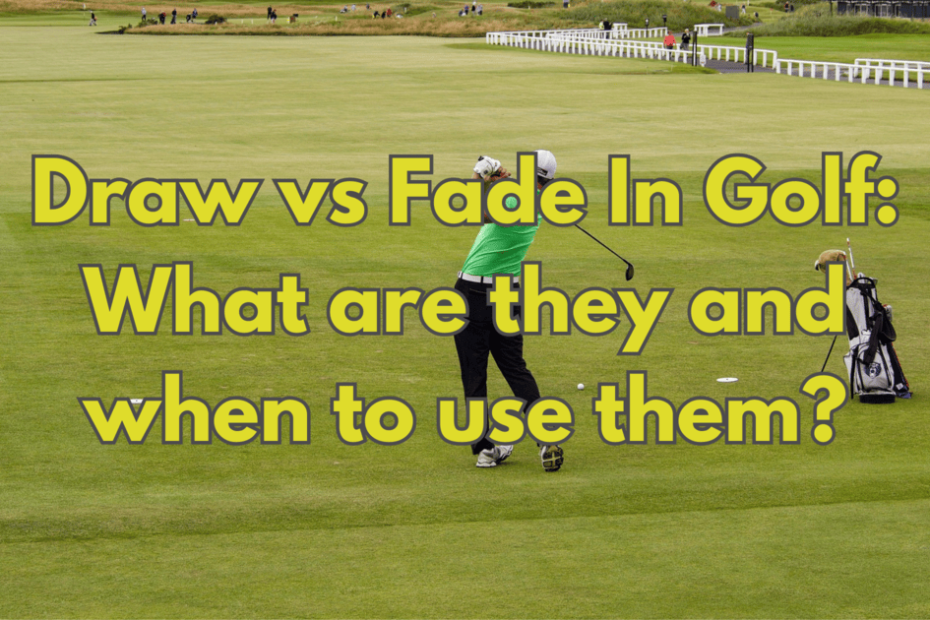It can sometimes seem as though golf has an entirely unique and complicated language all of its own. For players new to the sport, it can feel like a daunting process to learn all this new language. Today, we are going to look at two fundamental terms in the world of golfing, draw vs fade.
Draw vs Fade

Both the “draw” and “fade” golf shots impart a subtle sidespin on the ball, resulting in the shot concluding slightly off-center. Although excessive sidespin is generally undesirable, the slight lateral movement exhibited by draw and fade shots is frequently deemed advantageous or superior to hitting the ball straight.
Many golfers discover that their “natural” swing possesses either a draw or fade trajectory, yet experienced golfers have the ability to intentionally manipulate the shape of these shots at their discretion.
The primary distinction between draw vs fade shots lies in the lateral direction of the ball’s travel. In the case of right-handed golfers, a draw shot will exhibit a slight right-to-left trajectory, whereas a fade shot will showcase a slight left-to-right path.
What Is The Purpose Of Shot Shaping?
Crafting the trajectory of your shot can yield advantages both from the tee box and when executing approach shots.
The Benefits Of Shaping Your Tee Shots
When playing a hole with a leftward bend, known as a “dogleg left,” employing a draw as your shot shape is frequently deemed the most advantageous. By skillfully curving the ball around the bend, a draw enables you to approach the pin with greater proximity. This shot is considered riskier as the chances of ending up in the rough are greater. But properly executed this can give you a massive advantage on the hole.
In the majority of scenarios, should you fail to execute a draw and instead strike the ball straight, you will still find yourself on the fairway, albeit at a greater distance from the pin.
Conversely, in that same scenario, a fade is likely to guide your ball towards the rough on the right side of the fairway. Whilst a hook or a slice can be disastrous.
You can also use draws and fades to avoid obstacles such as trees, water, and bunkers along the fairway.
The Benefits Of Shaping Your Approach Shots

Take a look at the above example. The hole is located on the right and short side of the green with a bunker blocking the natural approach.
One safe strategy might be opting for a straight shot, aiming for the center of the green. This will minimize the risk of falling short into the bunker or overshooting the back of the green.
However, if you can execute a fade, you have the opportunity to approach the pin with greater proximity while mostly evading potential hazards.
Creating a fade or draw in your shot imparts additional spin to the ball, contributing to its overall stability and reducing the likelihood of it rolling off the green.
How To Shape Your Shot
It is probable that you naturally produce either a fade or draw with certain golf shots, even without consciously attempting to do so. It is virtually impossible for any golfer to consistently strike the ball perfectly straight on every single shot.
In the battle of draw vs fade, it is slightly more common for golfers to have a natural fade than a draw.
In truth, it doesn’t really matter if your typical shot is straight, draw, or fade. What matters more is consistency. Once you have a consistent trajectory you can account for this be aiming slightly left or right to get the desired outcome.
If you occasionally produce a fade with your shots, it is advisable to aim for target areas where both a straight shot and a fade would lead to a manageable subsequent shot. Referring to the previous example, directing your aim towards the center of the green would be ideal. In the event of a straight shot, you would securely position yourself in the center of the green, while a faded shot would place the ball closer to the hole, making for a far easier putt.
If you frequently observe excessive rightward spin on the ball (known as a slice), you may want to adjust your aim even further to the left.
Draw vs Fade: Which is better?
While there is nothing wrong with naturally executing drawing or fading shots, it is important to refrain from randomly alternating between the two. If your shots veer off course both to the right and left, it often becomes challenging to identify a safe spot to aim for.
Consistency is key. Hit the driving range and keep practicing until the shape of your shots are all similar. This will improve your game (and scorecard!) much more than trying to progress to manipulating shot shape too quickly. Get the basics down first.
What is a Fade in Golf?
For right-handed players, a fade is a shot that curves slightly from left to right. This happens because of the side spin imparted on the ball upon contact. This is caused by the clubface being ever so slightly open relative to the path of the swing.
How to Hit a Fade in Golf?
The easiest way to hit a fade in golf:
Start by aiming the clubface at your target, or a tiny bit closed to your target.
Then, open up your body in relation to the target. When evaluating your stance, imagine a line from your right toe to your left toe. This should point to the left of your target.
Maintain a consistent swing that aligns with the trajectory of your body. You must also ensure that the clubface is directed towards your intended target at the moment of impact.
What is a Draw in Golf?
For right-handed players, a draw is a shot that curves slightly from right to left. This happens because of the side spin imparted on the ball upon contact. This is caused by the clubface being ever so slightly closed relative to the path of the swing.
How to Hit a Draw in Golf?
The easiest way to hit a draw in golf:
Start by aiming the clubface at your target, or a tiny bit open to your target.
Then, close your body in relation to the target. When evaluating your stance, imagine a line from your right toe to your left toe. This should point to the right of your target.
Maintain a consistent swing that aligns with the trajectory of your body. You must also ensure that the clubface is directed towards your intended target at the moment of impact.
It may also help to place the ball slightly further back in your stance.




